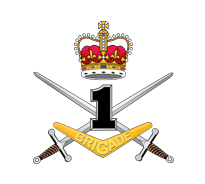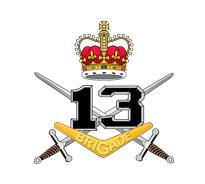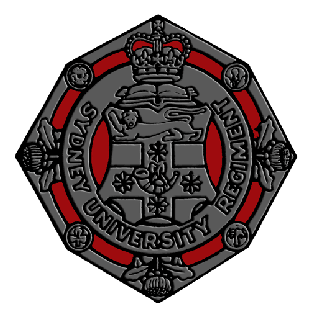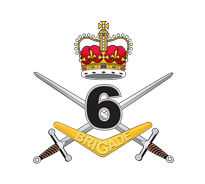
The Australian Army is the principal land warfare force of Australia, a part of the Australian Defence Force (ADF) along with the Royal Australian Navy and the Royal Australian Air Force. The Army is commanded by the Chief of Army (CA), who is subordinate to the Chief of the Defence Force (CDF) who commands the ADF. The CA is also directly responsible to the Minister for Defence, with the Department of Defence administering the ADF and the Army.

The Royal Military College, Duntroon, also known simply as Duntroon, is the Australian Army's officer training establishment. It was founded at Duntroon, in Canberra, Australian Capital Territory, in 1911 and is at the foot of Mount Pleasant near Lake Burley Griffin, close to the Department of Defence headquarters at Russell Hill. It is comparable to the United Kingdom's Royal Military Academy Sandhurst and the United States Military Academy at West Point. Duntroon is adjacent to the Australian Defence Force Academy (ADFA), which is Australian Defence Force's tri-service military academy that provides military and tertiary academic education for junior officers of the Australian Army, Royal Australian Air Force and the Royal Australian Navy.

The Australian Army Reserve is a collective name given to the reserve units of the Australian Army. Since the Federation of Australia in 1901, the reserve military force has been known by many names, including the Citizens Forces, the Citizen Military Forces, the Militia and, unofficially, the Australian Military Forces. In 1980, however, the current name—Australian Army Reserve—was officially adopted, and it now consists of a number of components based around the level of commitment and training obligation that its members are required to meet.

This article describes the current structure of the Australian Army. It includes the army's order of battle and the headquarters locations of major units. Members of the Australian Army also serve within joint units of the Australian Defence Force which fall outside the direct command of the Australian Army.

7th Brigade is a combined arms formation or brigade of the Australian Army. The brigade was first raised in 1912 as a Militia formation, although it was re-formed as part of the First Australian Imperial Force in early 1915 for service during World War I. It subsequently saw action at Gallipoli and on the Western Front during the war. Following the end of the war the brigade was disbanded in 1919 before being re-raised in 1921 as part of the Citizens Force. During World War II the brigade took part in the fighting against the Japanese in New Guinea and on Bougainville. Today, the 7th Brigade is part of Forces Command and is based in Brisbane, Queensland and is composed mainly of units of the Regular Army. While the brigade has not deployed as a whole unit since World War II, component units have deployed on operations to East Timor, the Solomon Islands, Iraq and Afghanistan.

1st Brigade is a combined arms formation of the Australian Army. Formed in 1903 as a militia formation based in New South Wales, it was reconstituted as part of the Australian Imperial Force in 1914 for service during World War I, the brigade fought at Gallipoli and on the Western Front before being disbanded in mid-1919. In 1921, the 1st Brigade was re-raised as a unit of Australia's part-time military forces, based in New South Wales. During World War II the brigade undertook defensive duties before being disbanded. In 1948, it was re-raised as an integral part of the Australian Regular Army. Currently the brigade is based at Robertson Barracks in Darwin and at RAAF Base Edinburgh near Adelaide, South Australia. It is the first of the Australian Army brigades to be re-organised as a combat brigade under Plan Beersheba.

The 3rd Brigade is a combined arms brigade of the Australian Army, principally made up of the 1st and 3rd Battalions of the Royal Australian Regiment. Initially raised in 1903 as part of the post-Federation Australian Army, it was removed from the order of battle in 1906 following the restructure of the field force. It was re-formed in 1914 for service during World War I, taking part in the fighting at Gallipoli and on the Western Front in Europe. During World War II the brigade was used in a defensive role before it was disbanded in 1944. It was re-raised in 1967 for service during the Vietnam War and later went on to provide the nucleus of the deployment to East Timor during the Australian-led intervention in 1999. The brigade is currently based at Lavarack Barracks in Townsville, Queensland.

The 13th Brigade is an Army Reserve formation of the Australian Army. Originally formed in 1912 as a Militia formation in Victoria, the brigade was re-raised as a First Australian Imperial Force unit during World War I and fought on the Western Front. In the interwar years, the brigade was re-raised as a part-time formation based in Western Australia and later fought in the New Britain Campaign during World War II.

Sydney University Regiment (SUR) is an officer-training regiment of the Australian Army Reserve. Its predecessor, the University Volunteer Rifle Corps, was raised in 1900 as a unit of the colonial New South Wales Defence Force. During the 20th century, several changes of name and role occurred. Sydney University Regiment is headquartered in Holsworthy Barracks and has detachments in Sydney, Canberra and Wollongong.

The Royal Australian Infantry Corps is the parent corps for all infantry regiments of the Australian Army. It was established on 14 December 1948, with its Royal Corps status being conferred by His Majesty King George VI. At her coronation in 1953, Queen Elizabeth II became Colonel-in-Chief of the corps. Major components of the RA Inf include the various battalions of the Royal Australian Regiment and the six state-based Australian infantry regiments, such as the Royal New South Wales Regiment. The various Regional Force Surveillance and Special Forces units of the Army are also part of the corps. The School of Infantry (SOI) is located at Singleton, New South Wales, and forms part of the Combined Arms Training Centre.

The 16th Battalion, Royal Western Australia Regiment is an Australian Army reserve infantry battalion located in Western Australia and one of the two battalions of the Royal Western Australia Regiment. The battalion was first formed during the First World War, during which it fought during the Gallipoli Campaign and on the Western Front in France and Belgium as part of the Australian Imperial Force. It was re-formed as a part-time unit in Western Australia during the inter-war years, and served in the New Britain Campaign against the Japanese during the Second World War. In the post war years, the battalion became part of the Royal Western Australia Regiment and currently forms part of the 13th Brigade.

A pioneer is a soldier employed to perform engineering and construction tasks. The term is in principle similar to sapper or combat engineer.

The 11th Brigade is an Australian Army brigade which currently comprises most Australian Army Reserve units located in Queensland. The brigade was first formed in early 1912 following the introduction of the compulsory training scheme. Later, as part of the 3rd Division and saw action during World War I on the Western Front as part of the First Australian Imperial Force. In the interwar years, the brigade was re-raised with its headquarters in Brisbane.

8th Brigade is an Australian Army Reserve training formation. It is headquartered in Sydney, and has subordinate units in various locations around New South Wales and the rest of Australia. These units are tasked with delivering basic and initial employment training to Reserve soldiers.

5th Brigade is a brigade of the Australian Army. Originally raised as a militia formation in 1912, the 5th Brigade was re-raised for overseas service in 1915 as part of the Australian Imperial Force during the First World War. The brigade then served during the Gallipoli Campaign and on the Western Front. During the inter-war years, it was re-raised as a part-time formation as part of Citizens Military Force. It undertook garrison duties in Australia during the Second World War, but was not deployed overseas before being disbanded in 1944. Following the war, the brigade was re-raised in 1948 once again and it is currently a Reserve combined arms formation based in New South Wales and forms part of the 2nd Division.

The 6th Combat Support Brigade is an Australian Army brigade. First formed in 1912 as a Militia formation to provide training under the compulsory training scheme, the brigade was re-raised during the First World War as an infantry unit of the all volunteer Australian Imperial Force. It subsequently served at Gallipoli and in France and Belgium on the Western Front. In the 1920s, as part of a reorganisation of the Australian Army, it became part of the 3rd Military District of the Citizens Military Force, encompassing units from Victoria and South Australia. In 1991, it became part of the Ready Reserve Scheme, based at Enoggera Barracks, in Brisbane, Queensland, before being disbanded in 1996 when the scheme was discontinued. The brigade was re-raised on 1 March 2010 to oversee the Army's command support and intelligence, surveillance, target acquisition and reconnaissance units.
The 2nd Brigade was a brigade-sized infantry unit of the Australian Army. Formed in 1903 as a militia formation based in Victoria, the brigade later served during the First World War as part of the Australian Imperial Force, allocated to the 1st Division. During the war, the 2nd Brigade took part in the fighting at Gallipoli, including the Battle of Krithia where it lost almost a third of its strength. Later they took part in the Battle of Lone Pine before being withdrawn back to Egypt in December 1915. Following this the brigade was transferred to the Western Front in France and Belgium where, between March 1916 and the armistice in November 1918, they took part in most of the major Allied operations.

The 1st Armoured Brigade was a formation of the Australian Army during World War II. The brigade was formed in July 1941, at Greta, New South Wales from volunteers for the Second Australian Imperial Force and was assigned to the 1st Armoured Division. Raised initially for service in the Middle East, following Japan's entry into the war, the brigade was assigned to the defence of Australia in case of an invasion. After garrison duties in New South Wales and Western Australia, it was disbanded in November 1944 without seeing active service, although some of its former units saw action later with other formations.

The 10th Light Horse Regiment is a "mounted infantry" regiment of the Australian Army Reserve, raised in Western Australia (WA).
Adelaide Universities Regiment (AUR) is an officer training unit of the Australian Army headquartered in Adelaide, South Australia. Currently AUR maintains a cadre staff of trained Regular and Reserve personnel who oversee and administer the training of Reserve officer cadets. The majority of the regiment is currently based at Hampstead Barracks.
















